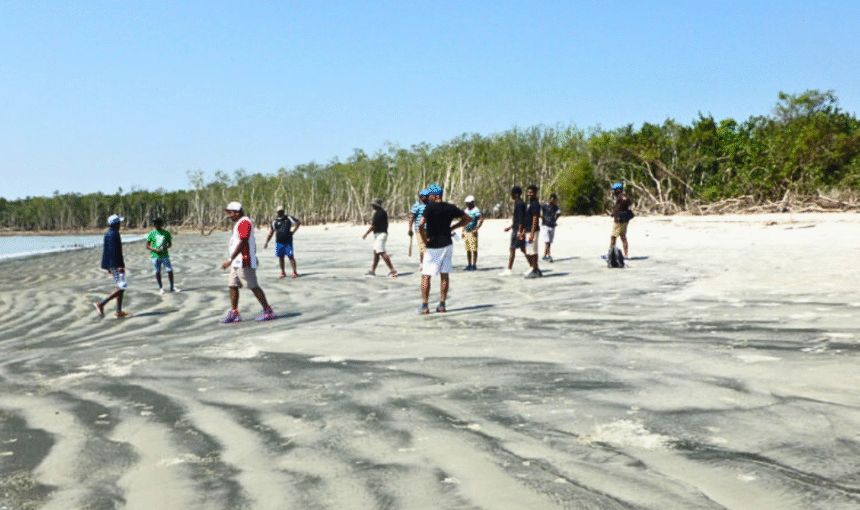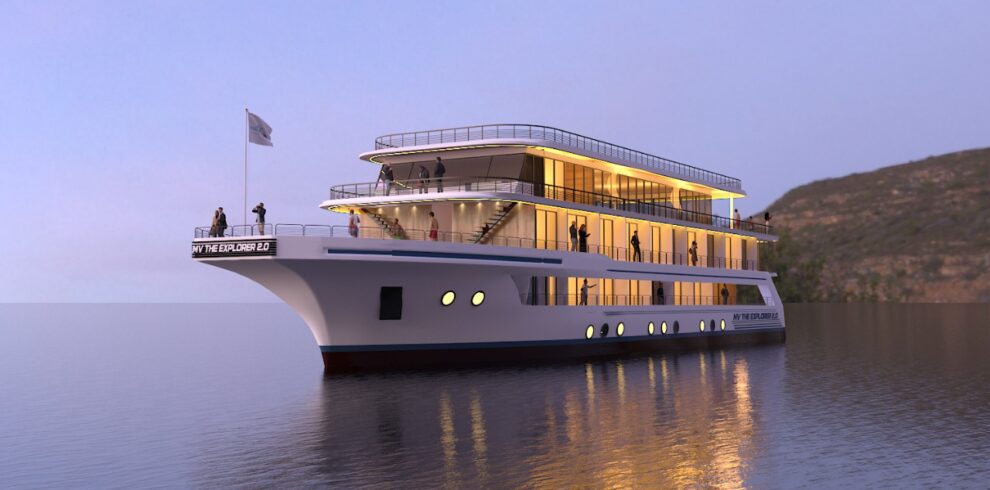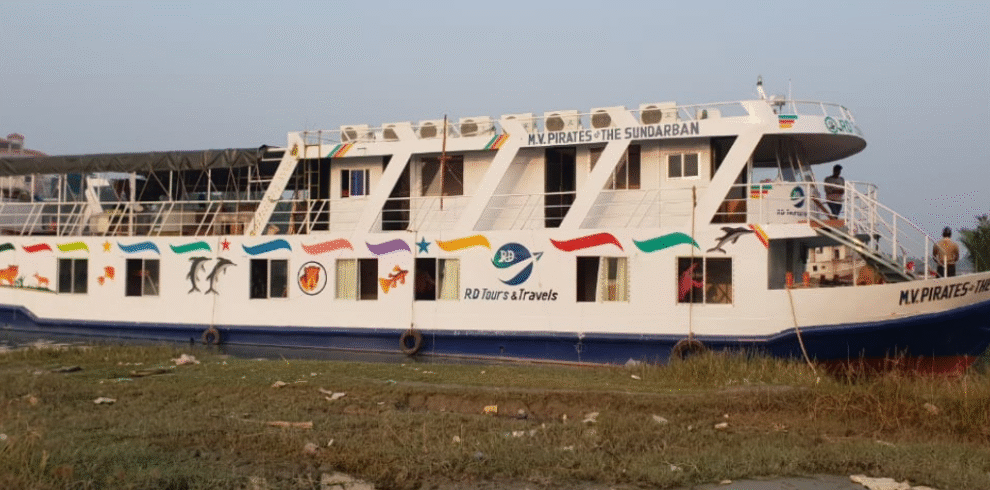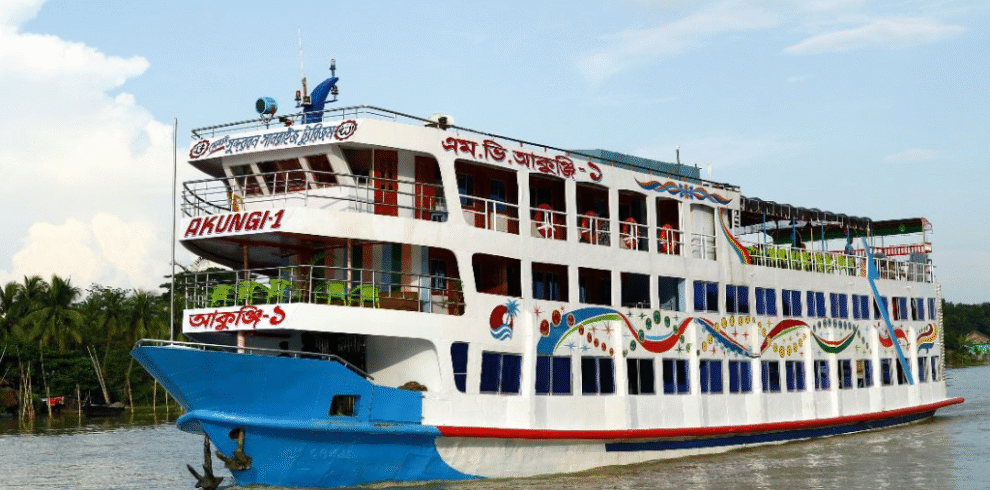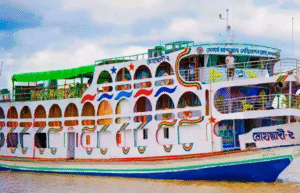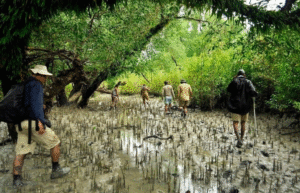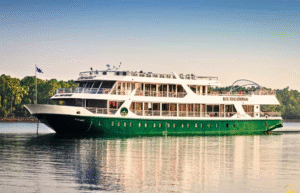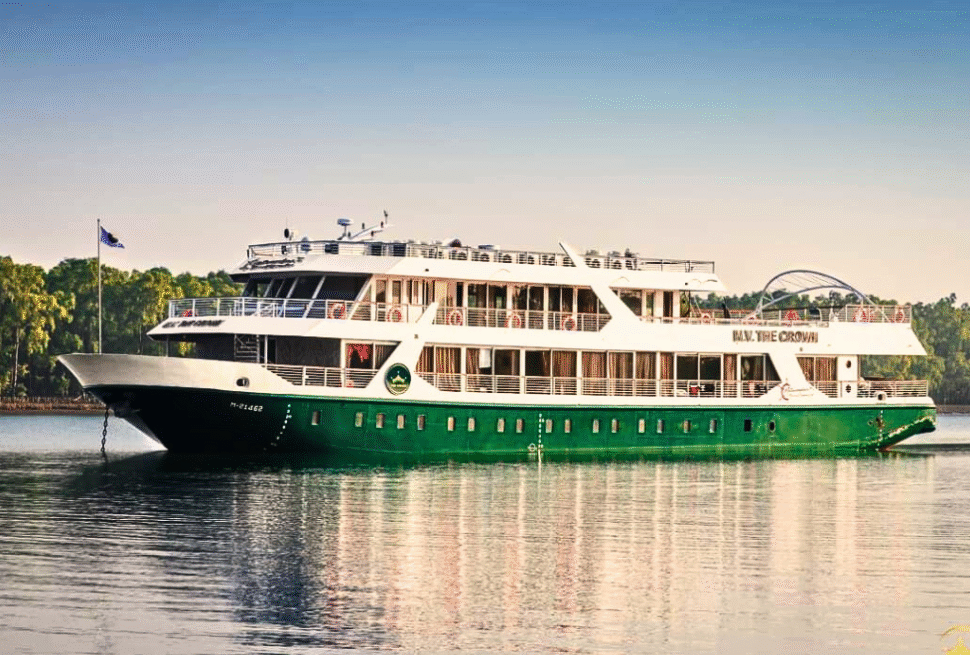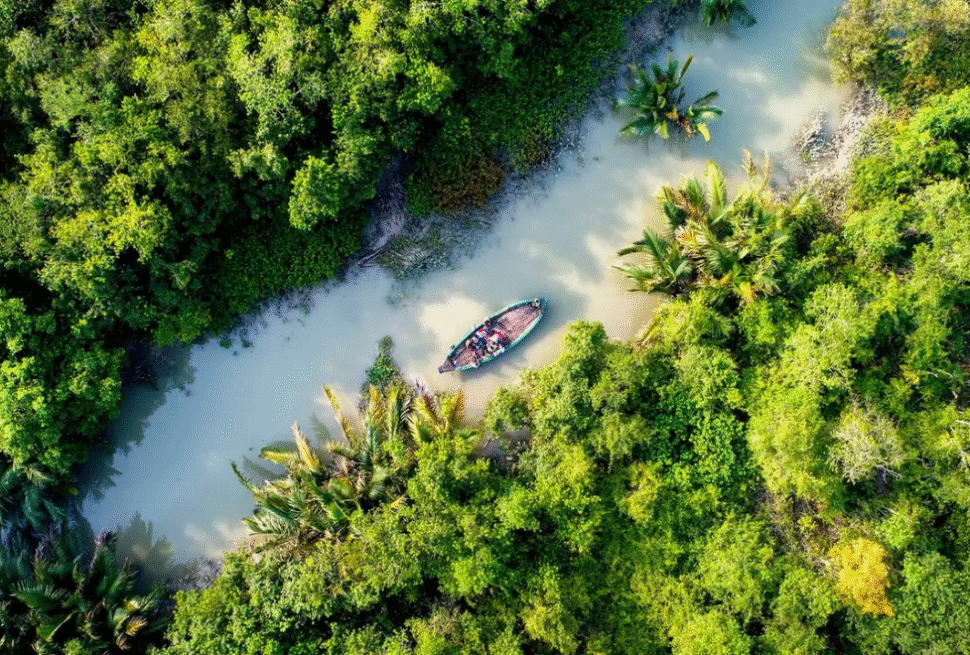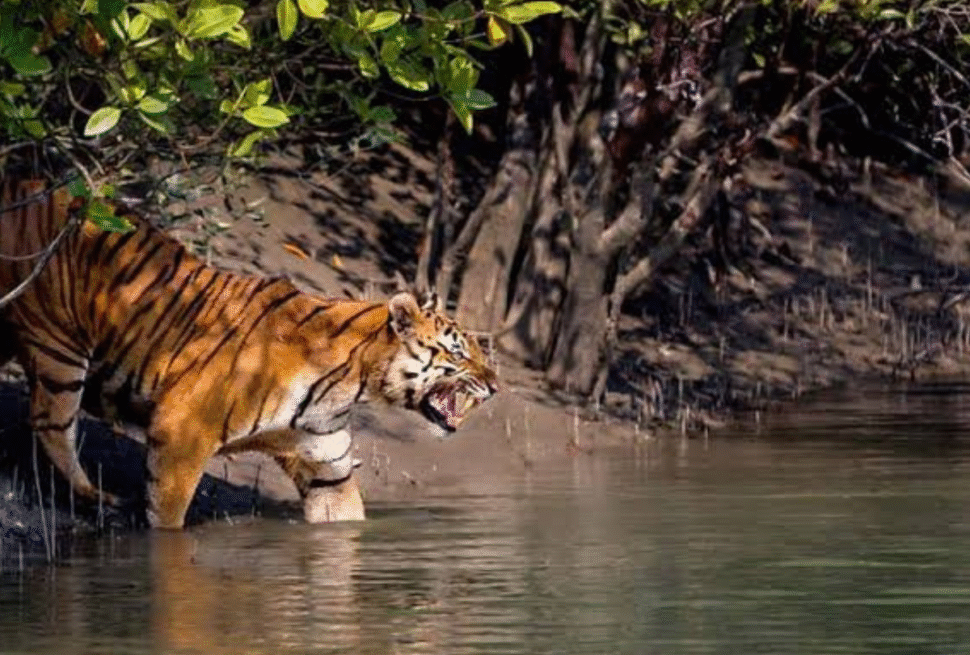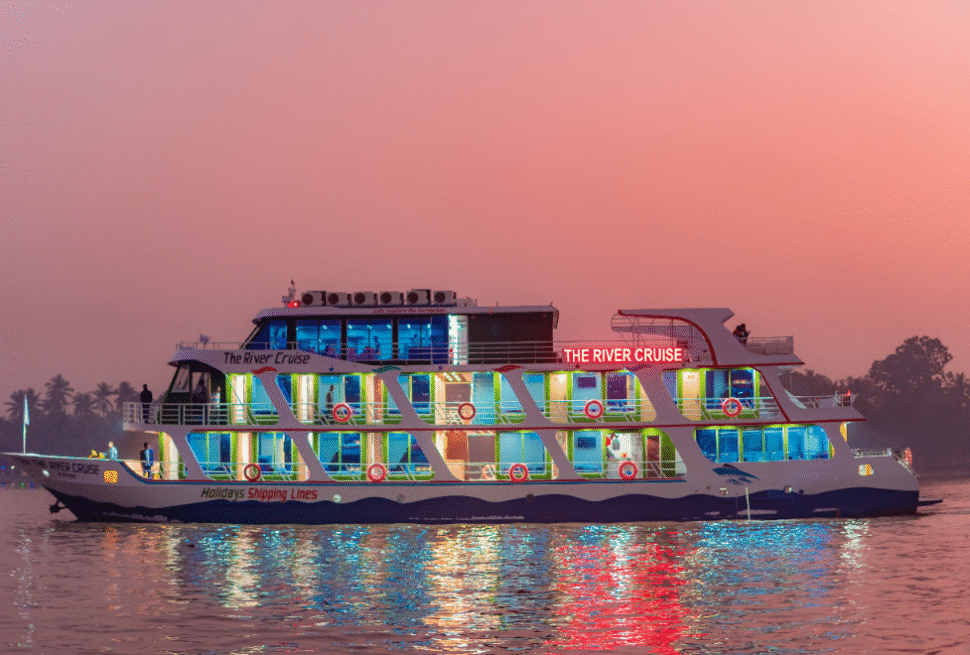Location:
Katka Sea Beach , a renowned wildlife sanctuary in the Sundarbans, is accessible by waterways from Mongla in Khulna or Bagerhat districts.
Main Attractions
- Royal Bengal Tiger (often sighted from a distance)
- Spotted deer, monkeys, wild boars in herds
- Various species of birds and saltwater crocodiles (especially visible during winter)
- Dense mangrove vegetation including keora and golpata trees
- Serene atmosphere and rich wildlife habitat
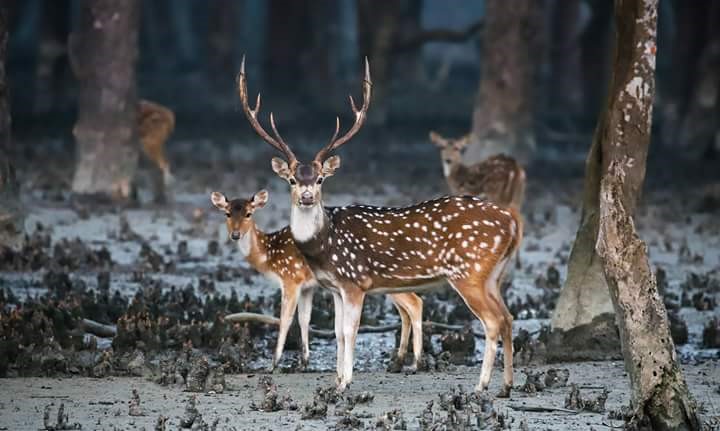
Main Attractions Katka Sea Beach
- Royal Bengal Tiger (often sighted from a distance)
- Spotted deer, monkeys, wild boars in herds
- Various species of birds and saltwater crocodiles (especially visible during winter)
- Dense mangrove vegetation including keora and golpata trees
- Serene atmosphere and rich wildlife habitat
Key Points of Interest
- Katka Watch Tower: A four-story, 40-foot-high tower offering panoramic views of the Sundarbans
- Tiger Hills: Three sandy mounds where tiger footprints are often seen
- Jamtola Sea Beach: Secluded and clean, filled with artistic patterns made by crabs
- Boyar Canal & Forested Shores: Full of vibrant birdlife and diverse animals
Best Time to Visit
Winter (November to February) – ideal for wildlife sightings and comfortable weather
Journey to Katka Wildlife Sanctuary
- Travel from Dhaka to Khulna or Bagerhat by bus (from Gabtoli or Saidabad) or train
- Travel to Katka is typically arranged through licensed tour operators
To visit Katka Sea Beach & Wildlife Sanctuary, you must first reach the Sundarbans region, specifically Mongla in Khulna or Bagerhat. The primary—and practically only—means of travel to Katka is by launch (riverboat). These tourist launches typically anchor in the Katka canal.
Currently, more than a hundred tour operators are actively engaged in organizing trips to the Sundarbans. You can easily visit Katka by booking a trip with a reputable tour company. After reaching the Sundarbans, the tour staff will guide you to Katka.
From Dhaka, you can take a bus from Gabtoli or Saidabad terminals to Khulna or Bagerhat, or travel by train to Khulna from Kamalapur Railway Station. From Khulna’s Rupsha Ghat or Mongla in Bagerhat, launches are available to the Sundarbans. You can also find boats from Mongla, Morelganj, or Sharankhola in Bagerhat.
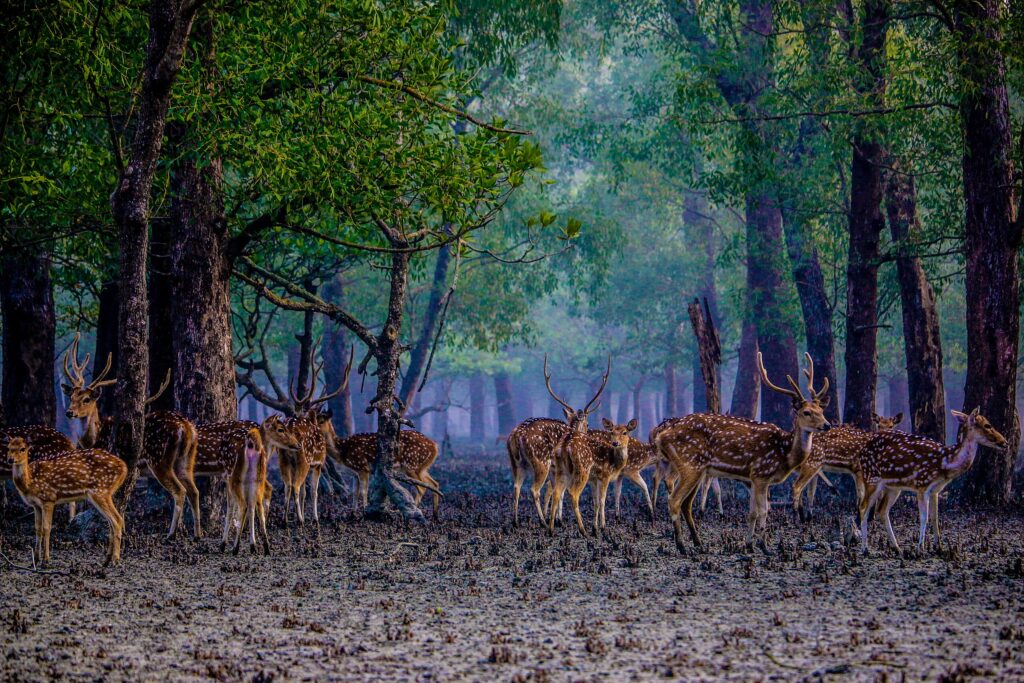
Journey to Katka Wildlife Sanctuary
The Sundarbans is the largest mangrove forest in the world and a UNESCO World Heritage Site. Among its biodiversity-rich zones, Katka Sea Beach Wildlife Sanctuary is located along the coast within the Sharankhola Range of the eastern Sundarbans forest division.
One of the main attractions of the Sundarbans is the Royal Bengal Tiger. However, spotting a tiger in the wild is rare, and even if you do, safety is always a concern. Fortunately, both tiger sightings and safety are possible at the well-maintained Katka Wildlife Sanctuary. Visitors here often catch glimpses of the elusive tiger.
Apart from tigers, herds of spotted deer, diverse bird species, serene natural surroundings, and a wide range of other wildlife make Katka a favorite among tourists.
Crossing the jetty on the western bank of the Katka canal, you’ll reach the forest office. A short walk west leads to a brick-paved path, and just ahead lies the sea—an excellent spot for watching the sunset.
Behind the Katka Forest Office, heading straight west on a wooden trail, you’ll find a canal whose banks expose dense breathing roots of mangrove plants during low tide. With some quiet observation, you might spot groups of spotted deer nearby.
Walking a little south into the forest, you’ll encounter three “Tiger Hills”, small sandy mounds where tiger paw prints are often seen. A bit farther west lies Boyar Canal, flanked by Keora and Golpata trees, resonating with birdsong and wilderness.
To the north of the Katka jetty lies another mangrove stretch, where you can see herds of deer, monkeys, and wild boars. In winter, it’s also possible to spot saltwater crocodiles basking in the sun.
Just across from the Katka Forest Office, a narrow creek flows eastward. Along this path, on the right side, there’s a small jetty and a four-story watchtower, about 40 feet tall, offering panoramic views of the Sundarbans’ breathtaking natural beauty.
There’s also a beautiful sea beach near the tower. On your return from the watchtower, you can walk along the beach and enjoy the tranquil scenery. To the east lies a long stretch of forest and a freshwater pond, which supplies drinking water for the Coast Guard, forest officials, and local fishermen.
Looking around, you may spot several endangered species. Even small creeks ahead of the watchtower host a significant variety of wild animals, making Katka Wildlife Sanctuary a true haven of natural beauty.
From the Katka Watch Tower, if you walk straight north for about three kilometers, you’ll reach Jamtola Sea Beach. Along the way, various jamun trees justify the name “Jamtola.” The beach is peaceful and clean, adorned with the intricate artwork of crabs on the sand.
In some places, you’ll see tree roots washed clean by the tide. The beach eventually leads east to Kochikhali.
Important Notes
- Follow all guidelines from the Forest Department and Coast Guard
- Bring sufficient food and clean drinking water
- Jamtola Beach is not ideal for swimming.

